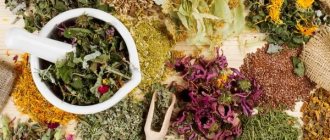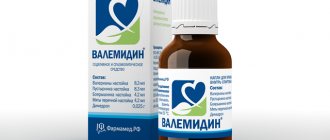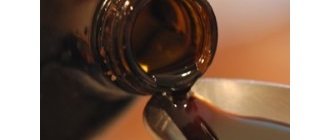Common yarrow is a herbaceous perennial from the Asteraceae family. The wide distribution and pronounced medicinal properties of yarrow are appreciated by herbalists and adherents of natural treatment.
This plant has such names as poreznik, whitehead, gulavitsa. A tenacious herb has taken root among military doctors, since in case of injury this plant can save lives. It also has a distinctive, recognizable smell - those who smelled the aroma of yarrow will never forget it.
Today, yarrow is used both in folk recipes and in official pharmacology. The beneficial properties and contraindications of yarrow have been well studied. Knowing them, some health problems can be solved without resorting to synthetic drugs, which is important if you are intolerant to the latter.
What it looks like and where it grows
Common yarrow is a perennial plant that is most often found in steppe zones, forest meadows and bushes. It has straight stems up to 120 cm tall. The leaves are long, lanceolate and dissected into many pinnate segments, hence the name of the herb. Inflorescences are large baskets consisting of small white and pink buds with yellow cores.
Yarrow blooms from the beginning to the end of summer
The grass grows throughout the world in temperate climates. It can be seen throughout most of Russia, Europe, and North America. The plant is cultivated in Asia and Australia.
Which medicinal yarrow is pink or white?
If you study the common yarrow with its medicinal properties, contraindications and photos, it becomes clear that both pink and white flowers are used in medicine, although the latter are more common. Both types of raw materials contain useful substances.
Chemical composition of yarrow
The plant contains:
- vitamins C and K;
- amino acids and esters;
- bitterness and resinous substances;
- camphor and borneol;
- chamazulene;
- glycosides;
- tanning components;
- zinc, copper;
- potassium and magnesium;
- thujone;
- Achillein is a valuable alkaloid;
- selenium and boron;
- carotene;
- molybdenum;
- calcium;
- organic acids;
- substance cineole.
Important! Due to the glycosides and alkaloids in the composition, the medicinal properties of yarrow root, its leaves and flowers are accompanied by mild toxicity. Products should be used with caution.
Description of the plant
The Latin name of the plant - Achillea millefolium - already indicates unusual qualities. Descriptions of yarrow are found in medieval medical treatises. Achilles, the hero of the Iliad, famous by Homer, was cured with a similar herb.
The straight stem of the plant with a branching top reaches a meter in height. Yellowish fleshy rhizome with multiple branches.
It is not difficult to imagine what yarrow looks like, since its numerous small leaves cover almost the entire stem, justifying the name of the plant. The inflorescences forming umbrellas are located at the top. It begins to bloom in June. The fruits appear in September.
Being held in high esteem due to its medicinal properties, it also has other characteristic folk names - queenwort, whitehead, reznik, Achilles. The plant is also called tenacious grass, white porridge, soldier's grass.
For propagation on your own plot, yarrow seeds are used; seedlings are sown in boxes in February. The soil is prepared lightly with the addition of humus. After several leaves appear, the seedlings are planted and at the end of May they are planted in a permanent place.
Blank
When practicing self-harvesting yarrow, take into account that the flowers are harvested separately, cutting off the inflorescences with a stem up to 4 cm long, and the grass, which requires a fifteen-centimeter top of the stems.
It is not recommended to break the stems as they are elastic. and the yarrow root is easily pulled out of the soil, being close to the surface. Such actions destroy the plant. The harvesting period for grass lasts from June to mid-August.
There are different ways to dry yarrow at home. You can scatter the raw materials under a canopy or in a well-ventilated area. It is convenient to use special dryers, setting the temperature to 50°C.
Store dried grass and flowers in separate well-closed containers for up to two years.
Compound
The beneficial properties for which the yarrow plant is famous are based on its constituent elements that have a beneficial effect on the human body:
- Alkaloids. Gives hemostatic and analgesic properties.
- Flavonoids. Strengthen the immune system, slow down aging, and have an anti-inflammatory effect.
- Amino acids. Essential elements for the production of protein mass.
- Carotene. Improves vision and stimulates cell development.
The structural formula includes polysaccharides, resins, tannins, trace elements, organic acids, vitamin C, essential oils.
What diseases does yarrow treat and what does it help with?
Yarrow is beneficial for the human body for a wide range of diseases. Among the indications for the use of herbs, traditional medicine names:
- bleeding - internal and external, except arterial;
- chronic and acute infections;
- atherosclerosis;
- cystitis and glomerulonephritis;
- pyelonephritis;
- pancreatitis;
- hepatitis and gallbladder diseases;
- intestinal colitis and dysentery;
- peptic ulcer;
- acne and boils;
- diathesis and eczema;
- obesity.
The herb can be used for traumatic skin injuries - burns, wounds and abrasions. It also benefits hair loss.
Medicinal properties of yarrow flowers
The flowers of a perennial plant have pronounced healing powers. When used for medicinal purposes, yarrow:
- has anti-inflammatory and antimicrobial effects;
- helps with intestinal disorders and stops diarrhea;
- promotes rapid healing of cuts and suppurations;
- accelerates digestion and metabolic processes;
- has an antipyretic effect;
- strengthens the walls of blood vessels and normalizes phospholipid metabolism;
- removes toxic substances and waste from the body.
Indications for the use of yarrow herb also include diabetes mellitus and a tendency to bleed.
Is it possible to drink yarrow decoction and what does it help with?
For diseases, yarrow is usually taken in the form of water infusions and decoctions. Making drinks based on raw materials is not only possible, but also very useful. If proven algorithms are followed, medicines retain all valuable substances and help with inflammatory diseases, digestive disorders, and circulatory disorders.
The healing properties of yarrow for children
The healing properties of yarrow are used for nosebleeds in children, severe colds and abdominal pain. However, offering plant-based products to children under 6 years of age is strictly prohibited. The herb can have a negative effect on the central nervous system, provoke the development of hypotension and damage the health of the joints. If necessary, older children are allowed to be given light teas with a weak concentration.
The dosage of medicinal tea for a child for the first time should not exceed 20 ml
Attention! The herb has strict contraindications and can cause allergies. Before offering it to your child, you should consult your pediatrician.
The healing properties of yarrow for men
Men are recommended to drink herbal drinks for inflammatory diseases of the genitourinary system. The plant helps with prostatitis and urethritis, prevents the development of tumors. Baths with decoctions and infusions are indicated for sexually transmitted infectious diseases.
What are the benefits of yarrow herb for women?
The beneficial properties and contraindications of yarrow for women are of interest in gynecology. The herb is used to treat mastopathy, thrush and tumors. Decoctions and infusions normalize hormonal levels, improve well-being during menopause and painful menstruation. When using the herb, libido increases, vigor and general tone are maintained.
We recommend reading: Rosehip tea: benefits and harms, how to brew correctly, recipes
Is it possible to drink yarrow during pregnancy?
During the period of bearing a child, taking infusions and decoctions of medicinal plants is strictly prohibited. The herb can not only lead to miscarriage, but also contribute to the development of congenital diseases of the central nervous system and skeletal system in the fetus. In the third trimester, taking the plant increases the risk of thrombosis in a woman.
Is it possible to drink yarrow during menstruation?
The medicinal properties of yarrow herb in gynecology improve blood clotting; the plant is often used to stop bleeding. It can be used when menstruation is too heavy and painful. The herb will help minimize blood loss and prevent the development of anemia.
Is it possible to drink yarrow for pancreatitis?
The medicinal plant has a beneficial effect on the pancreas. When consumed correctly, it normalizes the production of digestive enzymes, prevents inflammation and protects the organ from irritation by bacteria and toxins.
You can use medicinal herbs for pancreatitis only during the period of remission. In the acute phase of the disease, any decoctions and infusions should be excluded.
Is it possible to drink yarrow for gastritis?
The medicinal properties of common yarrow speed up digestive processes and improve appetite. The herb is of great benefit for gastritis with reduced production of gastric juice. It eliminates heaviness in the stomach and promotes rapid and high-quality absorption of food.
In case of high-acid gastritis, decoctions should be avoided, they will irritate the mucous membranes
Beneficial features
The medicinal properties of yarrow are varied and are associated with the chemical composition of the plant, which includes many biologically active substances.
- Gelenic forms of the plant (obtained by extraction) have a pronounced antispasmodic effect on the smooth muscle tissue of the biliary and urinary tracts and intestines. This effect leads to dilation of the biliary tract and increased bile secretion into the duodenum, increased diuresis and relief of pain associated with intestinal spasms. These properties are associated with the presence of flavonoids and essential compounds in the plant.
- The bitter taste of Achilleain irritates the endings of the taste nerves, resulting in the activation of the secretion of gastric juice. The plant reduces bloating and fights flatulence.
- Among all known herbs, this plant has the best hemostatic properties: when applied locally and systemically, it quickly stops bleeding and does this without the formation of blood clots. The plant is indicated for any type of bleeding (except arterial) and at any age. Thrombophlebitis, heart attack and stroke are not strict restrictions on the use of yarrow, while other hemostatic drugs are dangerous to use for such diagnoses.
- The plant has anti-inflammatory, antiallergic and bactericidal properties thanks to essential oils, chamazulene and tannins.
- When applied topically, yarrow has an anti-burn effect.
- In moderate doses, hypotensive and sedative effects were observed.
Methods of preparation and use
The medicinal properties of yarrow, when used at home, are fully revealed in several herbal-based products. Traditional medicine mainly suggests subjecting the plant to heat treatment, but juice or gruel also brings benefits.
Fresh Juice
To obtain juice, you need to chop and then squeeze the fresh herb of the plant through gauze. The bitter liquid released will help with external and internal bleeding, with arrhythmia and anemia, and with coughing. Take it one small spoon three times a day.
Yarrow leaves need to be washed before extracting juice.
Infusion
The water infusion is prepared according to the following recipe:
- a large spoonful of dry grass is crushed;
- pour 500 ml of boiling water;
- Cover the container with a lid and wrap it in a towel.
The liquid must be infused for an hour and then filtered. Reviews and videos about the use of yarrow herb highly value the remedy as a cure for ARVI, digestive inflammation and uterine bleeding.
You need to drink yarrow infusion 150 ml three times a day
Advice! Warm infusion can be used to wash wounds and abrasions.
Tea
Natural tea based on the plant has a weak concentration and is approved for use, including for children. Prepare the drink like this:
- pour a large spoonful of dry leaves into a glass of boiling water;
- keep covered for half an hour;
- filter through cheesecloth.
6
Yarrow tea is best drunk on an empty stomach.
You can take a glass of tea for colds and inflammation three times a day.
How to brew yarrow decoction correctly
In folk medicine, treatment with yarrow in the form of a concentrated decoction is carried out for diabetes and gastritis. It is prepared like this:
- pour a large spoon of raw material into a glass of water;
- bring the product to a boil over the fire;
Then the drink is removed from the stove and left for another half hour.
The strained decoction should be taken three times a day, 100 ml.
Ointment
To prepare the ointment, the washed leaves are thoroughly crushed in a blender and then mixed with heated pork fat or regular petroleum jelly in equal proportions. The homogeneous mixture is placed in the refrigerator to harden.
The ointment can be used for ulcers and infectious rashes
Baths
For scabies, scaly lichen, eczema and other skin diseases, the herb can be used for medicinal baths. It is necessary to prepare a standard decoction, and then add it to a container filled with hot water in a volume of 1-2 liters.
You can take baths with yarrow for no longer than 15 minutes.
What to do if your throat hurts?
Painful sensations in the throat (laryngitis) can occur with an acute respiratory viral infection, with influenza, sore throat and other colds.
Yarrow is often used for gargling and inhalation, as it has the right set of properties necessary for rapid healing. A warm infusion of the herb is recommended for gargling, gargling the mouth and relieving inflammation. You need to drink ¼ glass 3 times a day before meals. You can prepare an infusion from the collection with peppermint in equal parts, pour 2 cups of boiling water and leave for 30 minutes. This decoction is also suitable for steam inhalation. It will be useful for those who have stomach and liver problems.
The use of yarrow herbs and flowers in folk medicine
There are many ways to use yarrow with its beneficial properties and contraindications. Traditional medicine offers effective and safe herbal recipes.
How to take yarrow infusion
An aqueous infusion from a medicinal plant is often used to treat coughs and bronchitis, to stimulate appetite and speed up digestive processes. One of the recipes suggests:
- pour 15 g of finely chopped herbs with 200 ml of warm water;
- simmer covered in a water bath for 15 minutes;
- strain and stand for another 45 minutes.
The finished infusion is topped up to the original volume and taken four times a day with a large spoon.
How to take and for how long can you drink yarrow decoction?
A decoction of yarrow is taken for diseases of the kidneys, respiratory tract and intestines. To prepare the product according to one of the recipes you need:
- leave the crushed leaves in cold water for several hours;
- Boil on fire under the lid for 30 minutes;
- filter and cool until warm.
Take a decoction of no more than 100 ml, and you can drink three servings of the medicine per day. Long-term use of a home remedy may cause side effects. In total, you should use the decoction for medicinal purposes no longer than two weeks in a row.
How to brew and take yarrow for the stomach and intestines
The use of yarrow decoction for gastritis in the non-acute phase helps eliminate pain and discomfort in the stomach and intestines. Prepare the following infusion:
- grind a small spoon of dry herb;
- Brew 500 ml of boiling water for 15 minutes.
The strained product is taken in a large spoon 20 minutes before meals.
How to take yarrow decoction for pancreatitis of the pancreas
In chronic pancreatitis, the medicinal herb helps support pancreatic function and prevent another exacerbation. You can prepare this remedy:
- yarrow, calendula and corn silk are mixed together in a small spoon;
- pour 200 ml of water into a large spoon;
- bring to a boil, and then leave for four hours and filter.
We recommend reading: Prickly pear cactus: medicinal properties and contraindications, photo
Take the product twice a day, 150 ml.
Pancreatitis can be treated with yarrow only during a calm period of the disease.
Use of yarrow for hemorrhoids
The medicinal properties of yarrow for hemorrhoids are most often used externally. For example, healing lotions have a good effect. They do it like this:
- a piece of clean cloth or gauze is moistened in a regular decoction of the plant;
- apply a compress to the anal area for 20 minutes.
The procedure must be repeated three times a day. In addition, warm baths with the addition of decoction are of great benefit.
Yarrow for oncology
Yarrow can be taken for stomach cancer - an infusion is prepared for this. The recipe looks like this:
- pour a large spoonful of dry raw material into a glass of hot water;
- heat for ten minutes under a lid in a water bath;
- remove from heat and leave for 45 minutes.
The finished product is added to a glass with clean water and taken 80 ml three times a day on an empty stomach.
Attention! You can use medicinal herbs for cancer only with the permission of the oncologist and in combination with medications.
Yarrow for the liver
For liver diseases, it is useful to use the plant in combination with honey and other natural ingredients. Traditional medicine offers the following recipe:
- 200 g of honey are heated in a water bath;
- add a small spoon of chopped yarrow herb;
- add two large spoons of corn silk and milk thistle seeds;
- Allow the product to harden without straining it.
You need to take the mixture three times a day, a small spoon on a full stomach.
Yarrow for cystitis
For cystitis in women, the medicinal plant is used to prepare an infusion. You can use this recipe:
- brew two small spoons of herb in a glass of hot water;
- leave covered for an hour;
- pass the finished infusion through cheesecloth.
When warm, the product is consumed four times a day, 1/4 cup.
How to brew yarrow depending on temperature for children
At elevated temperatures in children over six years of age, you can prepare a healing mixture using yarrow. They do it like this:
- 3/4 large spoon of dry herb is mixed with 10 dried linden flowers;
- pour 500 ml of boiling water;
- after seven minutes, add a few slices of lemon.
The product, cooled to a warm state, is offered to the child twice a day.
You can add a little honey to your child’s medicinal mixture.
The benefits and harms of yarrow tea are optimally balanced; a drink with a weak concentration does not lead to negative effects.
Yarrow to improve potency
When potency weakens in men, instructions for using yarrow tincture are in demand. The remedy is prepared as follows:
- two large spoons of dry grass and flowers are poured into a glass of vodka;
- leave in a warm and dark place for a week;
- After the expiration date, strain.
You need to take the medicine 20 drops three times a day on an empty stomach.
Help with sore throat
A common disease caused by staphylococcal, streptococcal and pneumococcal infections. It appears in the off-season during damp, cold weather. People with weakened immune systems and those suffering from chronic diseases of the nasopharynx are most susceptible to it. During a sore throat, the palatine tonsils become inflamed and purulent discharge often appears on them. You feel weakness and general malaise, pain when swallowing, cough, headache. Often the disease is accompanied by fever.
Traditional treatment comes down to disinfection therapy with various solutions that remove toxins from the body. Yarrow preparations, due to their antibacterial and anti-inflammatory properties, can significantly complement traditional treatment methods. For sore throat, gargling and ingesting a decoction or infusion prepared according to a traditional recipe, or supplemented with chamomile, sage, and honey, have a good effect.
It is necessary to gargle with warm broth immediately after sleep and then 3-4 times a day. The recipe is described above.
Application in cosmetology
The health benefits and harms of yarrow are highly valued not only in folk medicine, but also in home beauty recipes:
- Fresh plant juice eliminates skin inflammation and helps cope with acne.
- Infusions and decoctions moisturize the skin and increase its elasticity. Water products are used for daily washing.
- Decoctions of the medicinal plant are used to rinse hair after washing. After such procedures, hair acquires a healthy shine and strength, stops falling out and becomes more manageable.
Attention! For the healing herb to be beneficial, it must be used on curls and skin on an ongoing basis.
Contraindications to the use of yarrow and side effects
The medicinal plant has quite a few contraindications. It cannot be used when:
- pregnancy;
- slow heart rate and hypotension;
- increased blood clotting and thrombosis;
- stomach ulcer;
- gastritis with high acidity in the acute phase;
- lack of magnesium and calcium in the body;
- temperature above 38 °C, which lasts more than a day.
It is forbidden to use yarrow simultaneously with diuretics. Overdose may cause nausea, itching, rash and dizziness. In this case, you should immediately stop taking home medications and consult a doctor.
Collection and preparation
The flowers of the medicinal plant need to be collected from June to August. The leaves are cut off at the end of summer, when they have time to gain maximum nutrients.
The prepared raw materials are dried in the standard way in the fresh air, in the shade under a canopy. After all the moisture has evaporated, the grass is laid out in glass containers or linen bags and stored in a dark, dry place.
Yarrow remains suitable for use throughout the year.
When to collect?
During flowering, starting at the end of July. It is during this period that the plant gains the most useful substances. It is important to collect away from landfills and roads.
Do not uproot it so that the plantations of this miraculous plant do not decrease.
It is difficult to list the types of yarrow - there are more than 150 of them! Each type is rich in healing, biologically active elements. Official medicine has thoroughly studied all its properties. Not only beneficial but also harmful properties have been identified.










